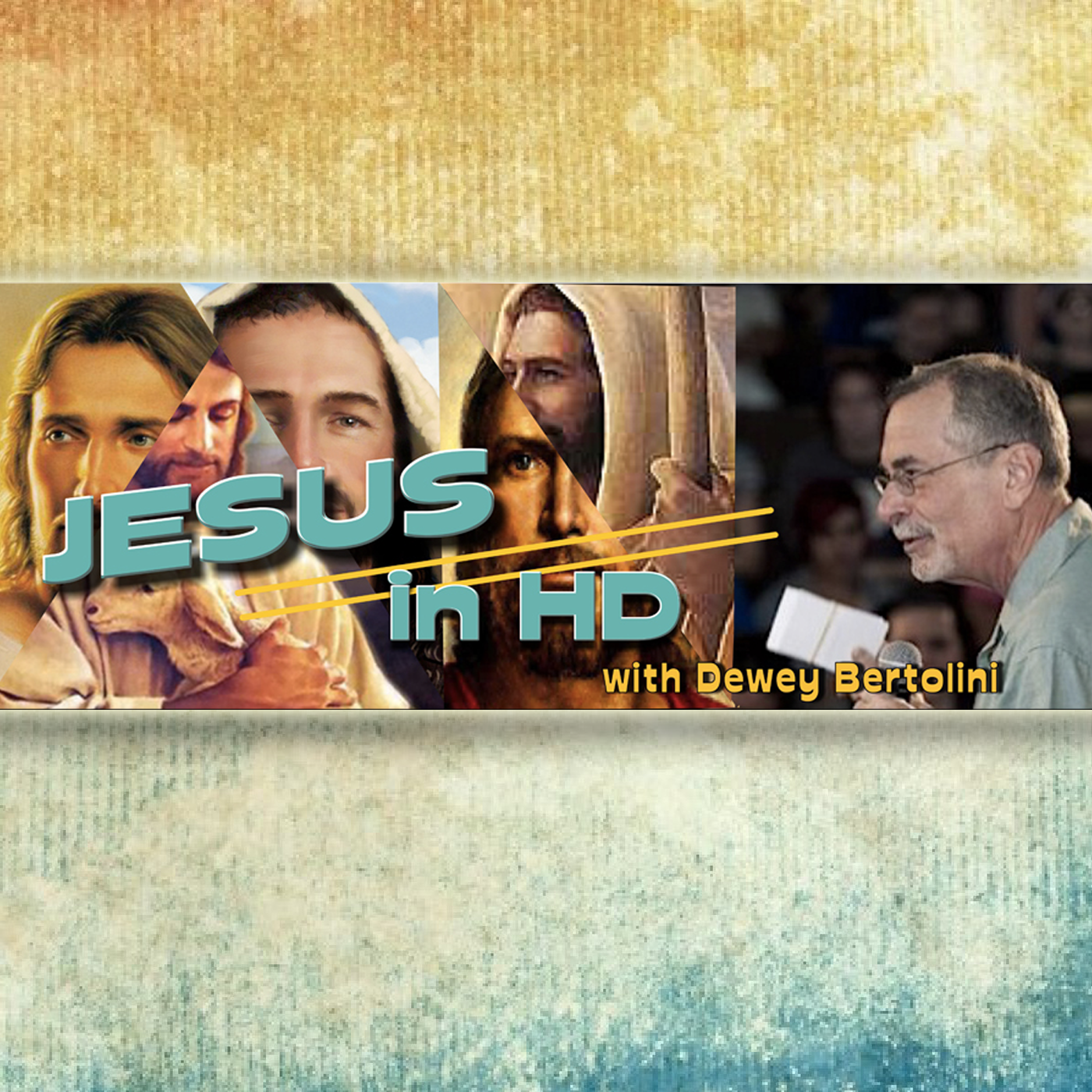
If last week’s discussion revealed to us the iconic image of the heart of Jesus, this week’s PODCAST will unveil to us the iconic image of the humanness of Jesus.
The beloved Apostle John wrote this in the first chapter of his Gospel masterpiece: “Jesus became human and made his home among us.”
Paul wrote this to his beloved little community of Christ-followers in Philippi:
“Though He was God… Jesus became completely human.”
Here in John 11, we will see just how completely human Jesus truly was.
I’ll clue you in right here from the start: We are about to witness three powerful, very human emotions collide within the heart and soul of Jesus. And as a result, we will be all the richer for having witnessed this collision, each emotion in response to the death of Jesus’ dear friend, Lazarus.
You are about to take a quantum leap in your understanding of who Jesus is, in a way that you may not be anticipating as we break the seal on this (to many people) very familiar story.
This entire discussion under this overarching question: What does it feel like to be Christ-like?
Rabbi, paint picture. OK, courtesy of John, let’s paint this picture. The picture of a very human Jesus, a human side of Jesus that perhaps you have never seen before.
Let’s begin by reading John 11:33-35,
When Jesus saw her weeping, and the Jews who had come along with her also weeping, he was deeply moved in spirit and troubled. 34 “Where have you laid him?” he asked.
“Come and see, Lord,” they replied.
35 Jesus wept.
So, let’s set the stage. Jesus and His disciples are about two miles outside of Jerusalem in Bethany. In addition to His disciples, Jesus also had a small group of close friends. They didn’t follow Jesus everywhere and sit at His feet daily, but they were relationally close to Him nonetheless. We met two of these friends a few weeks back in Episode 155 (Mary and Martha). And tonight, we meet Lazarus (whose name, remarkably, means “God helps”).
Whenever Jesus spent time in Jerusalem, He typically stayed in Bethany. It was a peaceful, beautiful town… except for this day.
While Jesus was two miles away, in Perea, Mary and Martha sent a messenger running to Jesus to tell Him that their brother was ill. The cryptic message Jesus received was:
“Lord, Your dear friend is very sick.”
It’s noteworthy that they did not send the messenger begging Jesus to come to their home to see Lazarus, nor to miraculously heal him. No doubt, they knew that the religious leaders nearby were plotting to kill Jesus, so his coming to their home would be perilous. They were desperate, but they nevertheless put Jesus’ safety above the health and life of their brother.
Yet Jesus still chose to travel to Bethany to visit Lazarus.
Interestingly, even though He was so close, Jesus did not stop by Jerusalem at this point. In fact, He won’t enter Jerusalem for another four-to-six weeks in what we refer to today as His “Triumphant Entry” or Palm Sunday. In other words, to put this day in context, Jesus had less than two months before His crucifixion and death.
And He knew it.
So although Jesus loved Martha, Mary, and Lazarus, 6 He stayed where He was for the next two days. 7 Finally, He said to His disciples, “Let’s go back to Judea.” (John 11:5-7)
John, the author of this Gospel, does not tell us WHY Jesus decided to wait these two days, but we can read between the lines. So, Jesus waited two days, then traveled two days to Bethany. Therefore, four days passed between the time Jesus received the message about Lazarus and Jesus’ arrival at their home.
When Jesus arrived at Bethany, he was told that Lazarus had already been in his grave for four days. (John 11:17)
So, apparently, Lazarus actually died on the very day that Jesus received notice that he was sick.
Therefore, while there is much speculation as to why Jesus waited before traveling to Bethany, the theory that makes most sense is this: by waiting four days, there was no doubt that Lazarus was dead – resuscitation was not going to happen. Decomposition had already set in, as noted by his sister, Martha in John 11:39,
“Roll the stone aside,” Jesus told them.
But Martha, the dead man’s sister, protested, “Lord, he has been dead for four days. The smell will be terrible.”
What happened next was stunningly spectacular!
Then Jesus shouted, “Lazarus, come out!” 44 And the dead man came out, his hands and feet bound in graveclothes, his face wrapped in a headcloth. Jesus told them, “Unwrap him and let him go!”
Now, some have pointed out that if Jesus had not said, “Lazarus, come out!”… had He simply said, “Come out!”… perhaps every corpse in every grave in Bethany would have risen. Perhaps this is why Jesus was so specific in His choice of words.
This miracle – raising Lazarus from the dead – is the seventh and final sign around which John organized his Gospel. You see, John wrote his Gospel in order to establish the fact that Jesus is God, as we see in John 20:30-31,
Jesus performed many other signs in the presence of his disciples, which are not recorded in this book. 31 But these are written that you may believe that Jesus is the Messiah, the Son of God, and that by believing you may have life in his name.
What this means is that of all the miraculous things that Jesus did, John handpicked seven and designated them as “signs”, or indications, that it is an undeniable, verifiable fact that only God could do these things. Therefore, Jesus is God.
The first sign was when Jesus turned water into wine in John 2:11,
What Jesus did here in Cana of Galilee was the first of the signs through which he revealed his glory; and his disciples believed in him.
The second sign John wrote about was when Jesus healed the son of the Roman official in John 4. The third sign was when Jesus healed the paralyzed man in John 5. Fourth was Jesus feeding the multitude in John 6. Later in that same chapter, Jesus walked on water, which is the fifth sign. The sixth sign was when Jesus healed a blind man in John 9. Which leads us to the seventh and final sign: Jesus raising Lazarus from the dead.
I find it incredibly ironic that in the midst of Jesus completing the seventh sign of His deity, He also displayed his humanity.
Jesus wept.
Now, in order to get to the underlying truth that is woven through this story, the whole story of Jesus raising Lazarus from the dead revolves around three words.
Therefore, when Jesus saw her weeping, and the Jews who came with her weeping, He groaned in the spirit and was troubled. 34 And He said, “Where have you laid him?”
They said to Him, “Lord, come and see.”
35 Jesus wept.
The three Greek words that translate to: groaned in the spirit, troubled, and wept all work together to tell the story. Without understanding these words, you cannot understand the story.
When John wrote that “Jesus wept”, the word he used is more accurately translated to: He “burst into tears”. It conveys Jesus’ great love and compassion, as well as His ability to enter into your and my pain, and share in our sorrows.
When John said that Jesus groaned in the spirit, he used the Greek word embrimaomai, which more accurately means “deeply moved”. In other words, Jesus audibly let out a groan. And not just any groan, but one stemming from an angry rage. He was furious. He was enraged.
Then, when John wrote that Jesus was troubled, or tarasso, what he more accurately meant was that Jesus was emotionally stirred up, disturbed… even agitated. Jesus was internally in emotional turmoil.

So, when you plug all of this into the story, it becomes much more accurate and descriptive:
When Jesus saw Mary weeping, and the Jews who had come along with her also weeping, Jesus groaned audibly with indignation and became furious with rage. His insides were churning with agitation.
And Jesus burst into tears.
So, this all begs the question: What does it feel like to be Christ-like?
This brings to mind Colossians 1:15-16,
Christ is the visible image of the invisible God.
He existed before anything was created and is supreme over all creation,
16 for through him God created everything
in the heavenly realms and on earth.
He made the things we can see
and the things we can’t see—
such as thrones, kingdoms, rulers, and authorities in the unseen world.
Everything was created through him and for him.
So, when we think of Jesus’ deity, we need to maintain the perspective of Jesus: the Creator of the universe.
You see, when God, through Jesus, created the universe, humanity, and the family, it was – in His words – GOOD. There was no cause for Jesus to be indignant or groan. This was not a world with any cause for God to burst into tears.
But then man decided that he wanted to be like God… and everything changed.
So, when you see the world that we live in disintegrating right before your eyes, despite all of its majestic beauty. And you see how it is filled with sorrow and sadness brought on by death and destruction… when you think about the physical, emotional and spiritual abuse that takes place every day… when you consider human trafficking, terrorism, genocide, and the erosion of family… when you think about rape, incest, and school shootings… when you see the moral fiber of our country being ripped to shreds with immorality being flaunted before our eyes every day and proclaimed as being “good”… when you think about refugees fleeing by the millions from their war-ravaged homes… when you think about loved ones lost…
When you think about a paradise lost, HOW DOES THAT MAKE YOU FEEL?
More to the point, how does this make Jesus feel?
Now you know. When Jesus saw all of this crystallized in the lives of the people He loved – their sorrow and devastation – Jesus responded by groaning audibly with indignation. He became furious with rage. His insides churned with agitation. And He burst into tears.
Why? Because this is NOT the world as God created it.
Nor is it the world as God will soon recreate it.
Revelation 21:1-22:7 tells us,
Then I saw a new heaven and a new earth, for the old heaven and the old earth had disappeared. And the sea was also gone. 2 And I saw the holy city, the new Jerusalem, coming down from God out of heaven like a bride beautifully dressed for her husband.
3 I heard a loud shout from the throne, saying, “Look, God’s home is now among his people! He will live with them, and they will be his people. God himself will be with them. 4 He will wipe every tear from their eyes, and there will be no more death or sorrow or crying or pain. All these things are gone forever.”
5 And the one sitting on the throne said, “Look, I am making everything new!” And then he said to me, “Write this down, for what I tell you is trustworthy and true.” 6 And he also said, “It is finished! I am the Alpha and the Omega—the Beginning and the End. To all who are thirsty I will give freely from the springs of the water of life. 7 All who are victorious will inherit all these blessings, and I will be their God, and they will be my children.
8 “But cowards, unbelievers, the corrupt, murderers, the immoral, those who practice witchcraft, idol worshipers, and all liars—their fate is in the fiery lake of burning sulfur. This is the second death.”
9 Then one of the seven angels who held the seven bowls containing the seven last plagues came and said to me, “Come with me! I will show you the bride, the wife of the Lamb.”
10 So he took me in the Spirit to a great, high mountain, and he showed me the holy city, Jerusalem, descending out of heaven from God. 11 It shone with the glory of God and sparkled like a precious stone—like jasper as clear as crystal. 12 The city wall was broad and high, with twelve gates guarded by twelve angels. And the names of the twelve tribes of Israel were written on the gates. 13 There were three gates on each side—east, north, south, and west.14 The wall of the city had twelve foundation stones, and on them were written the names of the twelve apostles of the Lamb.
15 The angel who talked to me held in his hand a gold measuring stick to measure the city, its gates, and its wall. 16 When he measured it, he found it was a square, as wide as it was long. In fact, its length and width and height were each 1,400 miles. 17 Then he measured the walls and found them to be 216 feet thick (according to the human standard used by the angel).
18 The wall was made of jasper, and the city was pure gold, as clear as glass. 19 The wall of the city was built on foundation stones inlaid with twelve precious stones: the first was jasper, the second sapphire, the third agate, the fourth emerald, 20 the fifth onyx, the sixth carnelian, the seventh chrysolite, the eighth beryl, the ninth topaz, the tenth chrysoprase, the eleventh jacinth, the twelfth amethyst.
21 The twelve gates were made of pearls—each gate from a single pearl! And the main street was pure gold, as clear as glass.
22 I saw no temple in the city, for the Lord God Almighty and the Lamb are its temple. 23 And the city has no need of sun or moon, for the glory of God illuminates the city, and the Lamb is its light. 24 The nations will walk in its light, and the kings of the world will enter the city in all their glory. 25 Its gates will never be closed at the end of day because there is no night there. 26 And all the nations will bring their glory and honor into the city. 27 Nothing evil will be allowed to enter, nor anyone who practices shameful idolatry and dishonesty—but only those whose names are written in the Lamb’s Book of Life.
Then the angel showed me a river with the water of life, clear as crystal, flowing from the throne of God and of the Lamb. 2 It flowed down the center of the main street. On each side of the river grew a tree of life, bearing twelve crops of fruit, with a fresh crop each month. The leaves were used for medicine to heal the nations.
3 No longer will there be a curse upon anything. For the throne of God and of the Lamb will be there, and his servants will worship him. 4 And they will see his face, and his name will be written on their foreheads. 5 And there will be no night there—no need for lamps or sun—for the Lord God will shine on them. And they will reign forever and ever.
6 Then the angel said to me, “Everything you have heard and seen is trustworthy and true. The Lord God, who inspires his prophets, has sent his angel to tell his servants what will happen soon.”
7 “Look, I am coming soon!”, said Jesus.
Now you know why, when Jesus looks upon the earth today, He groans audibly with indignation and becomes furious with rage. You know why His insides churn with agitation and why He bursts into tears. And you know why, at times, we do, too.
There are times when THAT is what it is like to be Christ-like.
All I can say is the same words that John used to finish the Biblical writings:
“Come, Lord Jesus. Come!”














